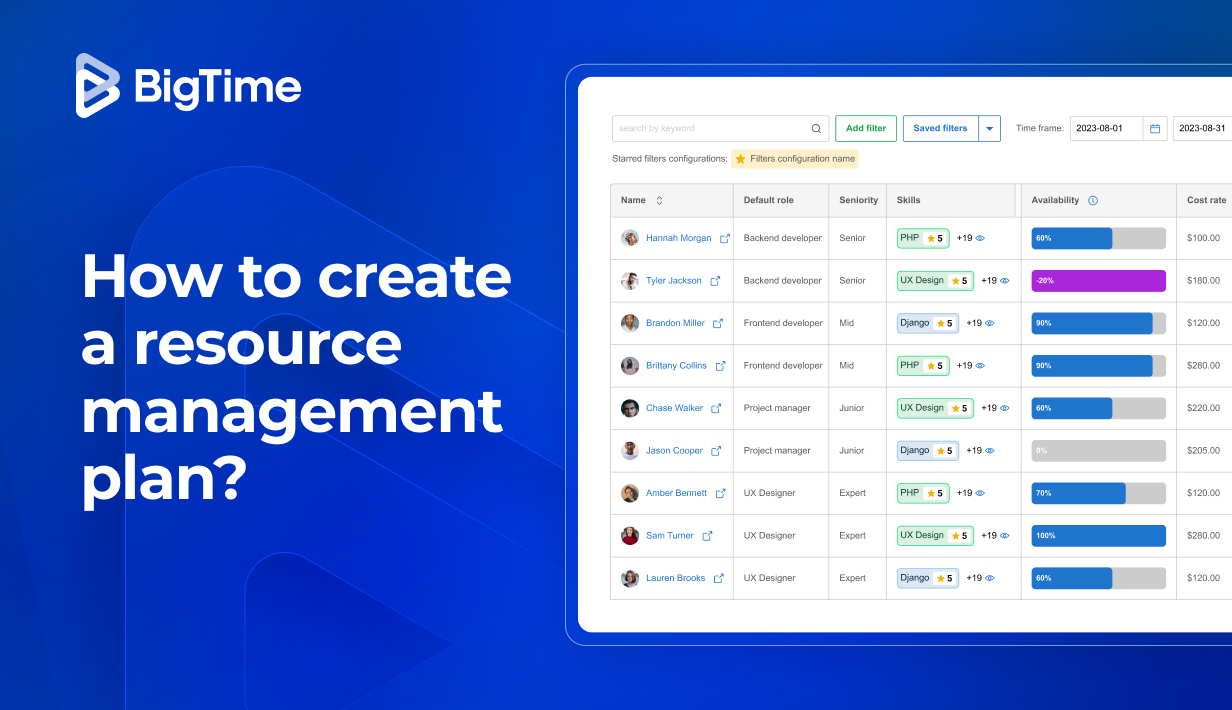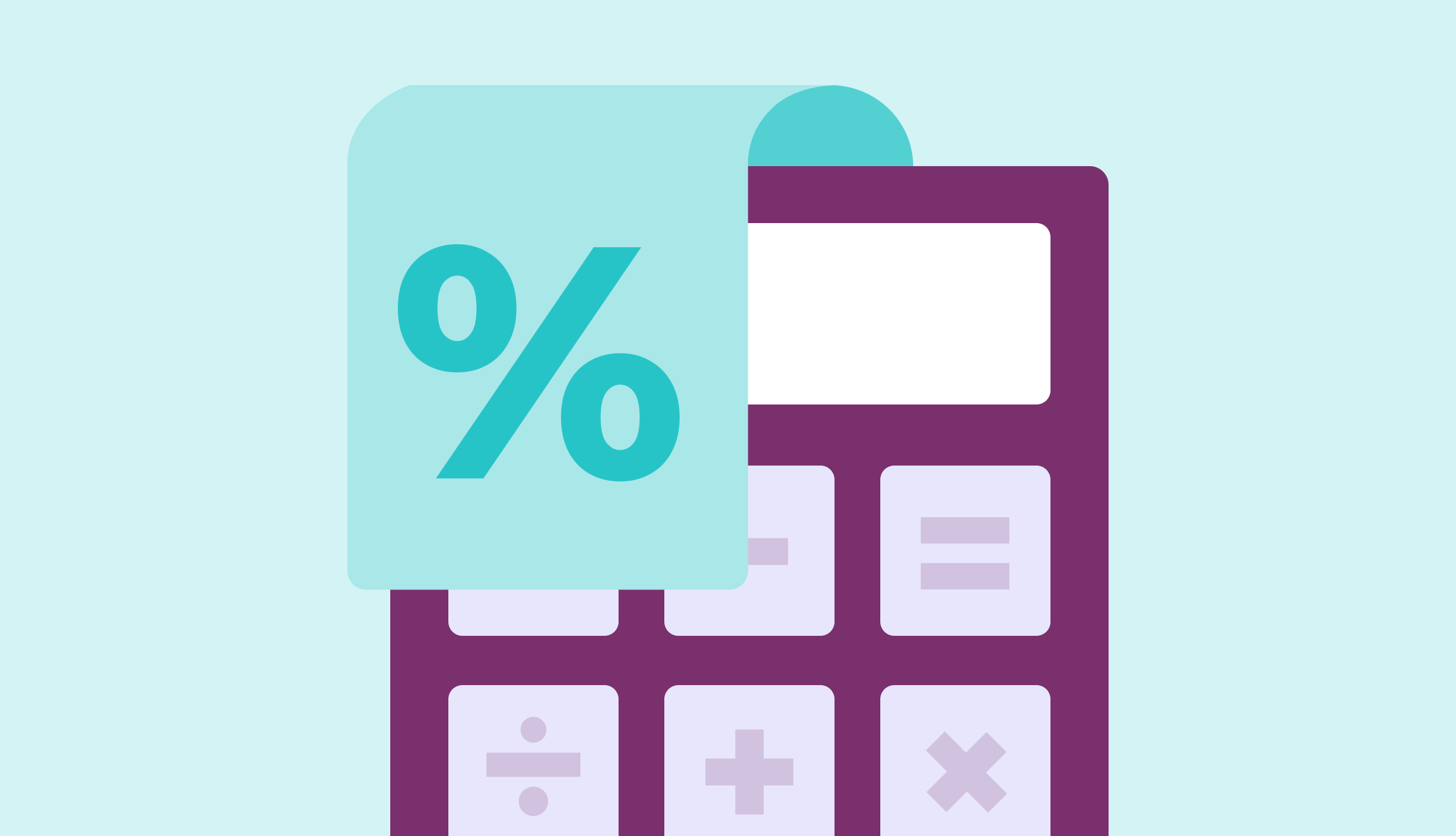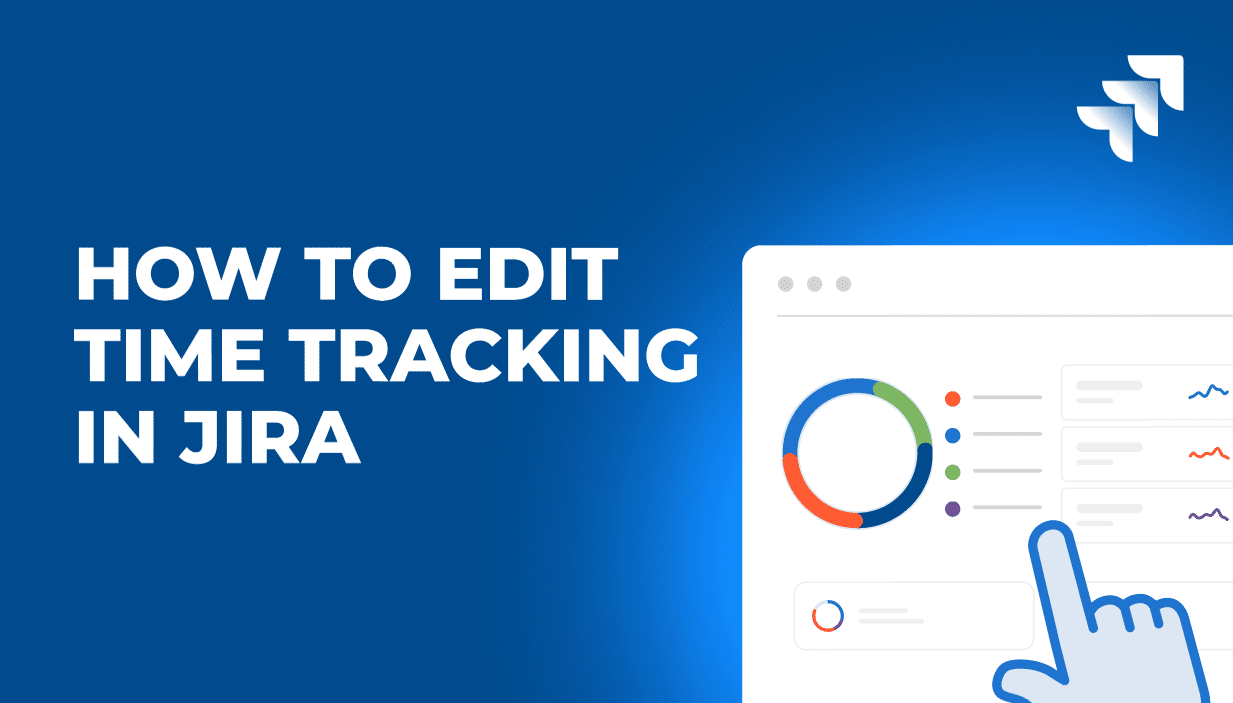With dozens of project team members and numerous projects, even the best resource managers can sometimes struggle to manage resource availability without a single error. Still, that doesn’t mean that creating a perfect and effective resource management plan is impossible!
Using the right resource management techniques, balancing project needs and resource utilization can be a piece of cake, not a lenghty and burdensome process – and we will show you exactly how to achieve such results.
In this article, you will find all the resources you need to create a resource management plan, including:
- The definition of resources in project management
- The definition of a resource management plan
- The components of resource management plan
- Examples of resource management plan
- A perfect resource management process that can help you create your own plans.
What are resources in project management?
In project management, the word “resources” refers to anything you need to complete the project, from physical resources, such as hardware, raw materials, and other equipment, to human resources, such as employees and contractors.
In the context of a resource management plan, “project resources” usually describe all the human resources needed for project execution – and these are the resources we will take care of in our resource allocation.
What is a resource management plan?
A resource management plan (or simply a resource plan) is a document containing all the information project managers need to successfully and accurately allocate, manage, and monitor the resources they need to complete a project. The main goal of this document is simple: to maximize resource utilization while assigning resources with minimum error.
Why is a plan for resource management important for project management?
Mistake-Proof Method
First of all, a resource management plan helps you avoid numerous mistakes, both in estimates and in the actual project scheduling. It allows project managers to see their specialist and their availability as it really is, instead of making a wild guess. That’s why resource management plans result in much more accurate assumptions.
Workload Well Managed
Resource management plans can also help people in charge spot overworked or benched employees. As a result, the sales department can focus on searching for additional projects for those who find themselves with no tasks, while HR can see if new specialists need to be hired to support the ones struggling with too many responsibilities. In other words, it can help you say goodbye to poor resource planning!
Improved Profits
A resource management plan focuses on maximizing the output of every working hour for every employee, and for service companies, these hours are the main source of income. As a result, with a resource plan in place, companies can plan their work better and find some room for additional (and very profitable) projects.

Components of resource management plan
Typically, a resource management plan should include information on:
- Resources: Required people and their availability, machinery, raw materials, technologies, programs, etc.
- Resource acquisition methods: The methods of acquiring specific resources, both internally and externally.
- A resource breakdown structure: An exact structure of your perfect team.
- Timeframes: Projects, their stages, and particular tasks.
- Assumptions and constraints: Availability, commitments, schedule, maximum costs, minimum margin, scope of projects, things to avoid, must-haves, work pace, and any other project or company-specific factors.
- Roles and responsibilities: Managers, responsible people, leaders, access levels, etc.
Key benefits of a resource management plan
Allocating resources effectively is only the main goal of a resource management plan. This document also has many other benefits, including:
- Avoiding hurdles and unexpected problems: Use the resource management plan to monitor the project and predict risks you wish to avoid before they impact your project.
- Preventing overtime and benches: With a resource management plan, you can see which employees have time to spend on new projects and use their availability to the fullest, increasing profits.
- Creating a feeling of transparency for both managers and employees. With the right access level, both parties can see what’s going on and what’s to come, and they can act accordingly.
- Measuring performance: A resource management plan creates a path for the entire project. When consecutive tasks are completed, their statistics can be compared to the schedule, helping you evaluate the project’s performance.
- Improving management processes: A resource management plan is a perfect source of information for managers who want to learn from their mistakes and improve what they do.
5 steps to create a successful resource management plan
The steps of a resource management plan require much more thought and, above all, work. Here’s how to create it in a few simple steps.
Start project planning
Planning the project is definitely the most complex part of a resource management plan.
At this stage, you need to:
- Define the project scope and divide it first into project phases, then into individual project deliverables.
- Estimate the time needed to complete each task, preferably based on historical data
- Create a draft schedule of the entire project, complete with preferred deadlines – for now, with no resources assigned.
As a result, you will create a general outline of the project and see its approximate schedule.
Identify resources your project needs
To ensure project success in the long run, you first need to identify people responsible for it.
To do that, determine the roles needed to successfully work on project deliverables. Then, try to assign responsibilities and create a hierarchy in your team – using a resource breakdown structure is the best way to do that. As a result, you should produce a very general list of resource requirements for your project.
Forecast resources in upcoming projects
If you already know your resource constraints and requirements, you can now compare your findings agains a list of employees that are actually available in a given period. To effectively combine the two, you will need resource forecasting.
The objective of resource forecasting is simple: to ensure resources you need are already within reach, and to identify any resource gaps before they affect your project. To determine how many resources you will use in your future projects, you can use a few different methods. The most popular ones include:
- Historical data analysis – Creating project plans based on similar past projects.
- Trend analysis – Allocating resources based on recurring trends and tendencies.
- Rolling forecasts – A flexible resource forecasting method involving constant changes in resource management based on the latest data.
- Software-based forecasting – Using designated resource management software – such as BigTime – to forecast different scenarios for your resource management plan.

The result? By the end of this stage of resource management, you should end up with a list of possible scenarios for your project, as well as an information on any resource gaps and missing qualifications you will have to acquire for the project to progress.
Additionally, after assigning resources to task, you should also create a project budget estimate to verify whether or not the cost of work won’t exceed your expectations. If they do, you still have a chance to find a cheaper replacement for the most expensive resources.
Communicate and solve problems
Most likely, you are not the only project manager in your company. As a result, you might end up competing for the same resources with others – and communication is the key to avoid that internal rivarly.
In the most basic cases, to ensure that your project will have all the available resources it needs, you will have to meet with other managers to create a centralized resource management plan for the whole business. Still, this option requires hours of meetings and updates, and it rarely results in a perfect plan.
Fortunately, there’s an alternative to manual communication. Resource management tools – such as BigTime – can facilitate the process by providing an instant overview of all the plans and allocations created and edited by your colleagues. As a result, barely any meetings are needed to keep all the stakeholders aligned.
At the same time, together with other managers and project stakeholders, you might also try to mitigate other risks such as:
- Underutilized resources
- Wrong resources assigned to incorrect projects
- Resources too expensive for a set project budget
- Schedule conflicts
- Overutilized resources
- Potential delays caused by absences and resignations.
Regularly update the resource plan
If you paid attention to the previous steps of the resource management plan, at this point you should have everything you need to see the elements of the resource plan that need to be adjusted.
In this step, you should use the data from the project monitoring and compare them with the schedule. Then, whenever you see any inconsistencies, adjust the plan or edit it accordingly — of course, keeping in mind the resources you already have.
Resource management plan: example and template
Below you will find an example of a resource management plan you can use as a reference for creating your documents. After removing the details, you can also use it as a resource management plan template!
Resource management plan for an implementation project – example
Purpose and scope
This Resource Management Plan defines how resources will be identified, acquired, allocated, managed, and monitored for the Client Billing System Implementation project.
- Purpose: Ensure that human resources, equipment, and budget are optimally planned and utilized.
- Scope: Applies to the entire project lifecycle—from planning through deployment and post-launch support.
Roles and responsibilities
- Project manager – Overall planning, allocation, and monitoring
- Resource manager – Approve resource allocation, resolve conflicts
- Technical lead – Oversee technical team, assign development tasks
- Business analyst – Requirements gathering, client liaison
Resource requirements
| Role | Quantity | Required skills | Start date | End date |
| Software developer | 3 | .NET, SQL, APIs | 2025-08-01 | 2025-12-15 |
| QA engineer | 2 | Test automation, regression testing | 2025-09-01 | 2025-12-20 |
| UX/UI designer | 1 | Wireframing, Figma | 2025-07-20 | 2025-09-15 |
| Business analyst | 1 | Requirements, client workshop | 2025-07-15 | 2025-10-31 |
Budget estimate
- Labor: $200,000
- Equipment & Tools: $25,000
- Materials & Supplies: $2,500
- Contingency (10%): $22,750
- Total Estimated Budget: $250,250
Resource allocation plan
| Phase | Resource(s) | Duration | Notes |
| Requirements & Design | BA, UI/UX Designer | Jul 15 – Sep 15 | Workshops, wireframes |
| Development | Software Developers, Tech Lead | Aug 1 – Nov 30 | Agile sprints, code reviews |
| Testing | QA Engineers, Developers | Sep 15 – Dec 15 | Automated and manual testing |
| Deployment & Training | All Team Members, PM | Dec 1 – Dec 20 | UAT, client training |
Resource monitoring and control
- Tracking Tool: Jira for tasks, BigTime PSA for time tracking and utilization.
- Reporting:
- Weekly resource utilization reports.
- Monthly budget reviews.
- Adjustments:
- Reallocation of resources during schedule slips.
- PM to escalate conflicts to Resource Manager.
- Change Control:
- Resource change requests require PM and Resource Manager approval.
Communication plan
- Weekly resource status meetings (Tuesdays 10 AM).
- Monthly stakeholder reviews.
- Updates via Slack (daily standups).
- Resource allocation changes communicated via email and posted in Confluence.
Easy planning? Use a resource management tool
Resource management is not a piece of cake, but with the right resource management software it can become another short task on your list instead of overwhelming your calendar. But what does a good resource management solution means?
Let’s look at the example of BigTime’s resource management system. With our tools, you can:
- Monitor key resource management KPIs, such as resource capacity, utilization rates, and availability, on a daily basis.
- Break down the project into smaller pieces, create estimates and outline your project plan.
- Browse the list of available specialists, find the people with the skills you need, and schedule resources in seconds – our project management software will notify you if it detects any cases of overutilization.
- Assign people to the task and edit their allocations to create a clear resource management plan while optimizing resource distribution.
- Keep all the project stakeholders on the same page by sharing your plans, reports and other documents. Any changes you make, as well as the project progress, will be visible in the real time.
Curious how we can help you manage resource assignments? Experience it right now with a free demo below:
And those are just a few reasons why BigTime is one of the best resource management software on the market. Book a demo and discover them all with our real-life examples of resource scheduling – and more.




